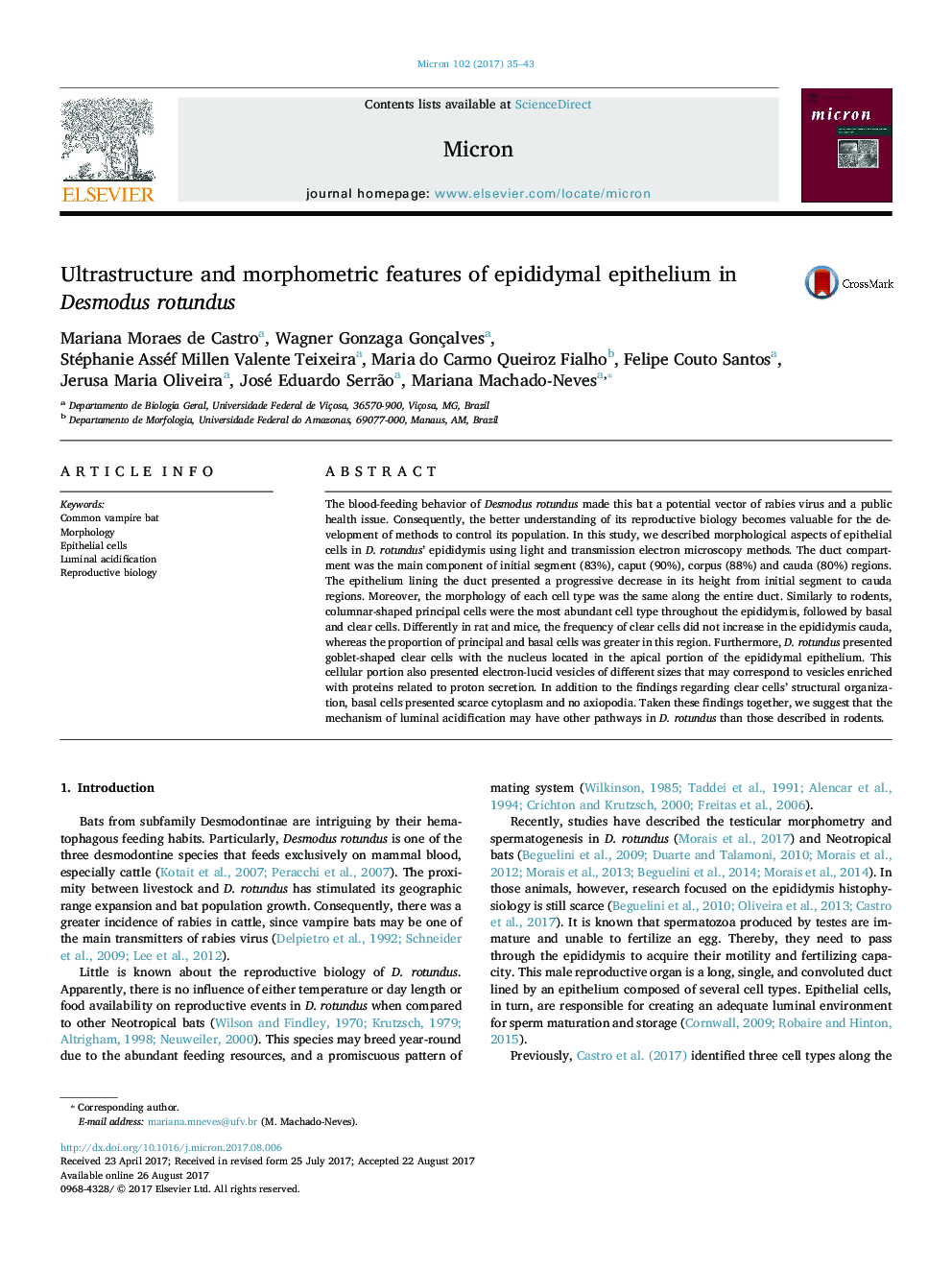| کد مقاله | کد نشریه | سال انتشار | مقاله انگلیسی | نسخه تمام متن |
|---|---|---|---|---|
| 7986295 | 1515114 | 2017 | 9 صفحه PDF | دانلود رایگان |
عنوان انگلیسی مقاله ISI
Ultrastructure and morphometric features of epididymal epithelium in Desmodus rotundus
ترجمه فارسی عنوان
فراوانی و ویژگی های مورفومتر اپیتلیوم اپیدیدیم در دزودوس روتندوس
دانلود مقاله + سفارش ترجمه
دانلود مقاله ISI انگلیسی
رایگان برای ایرانیان
کلمات کلیدی
خفاش خون آشام مشترک مرفولوژی، سلولهای اپیتلیال، اسیدیته لومینال، زیست شناسی تولید مثل،
موضوعات مرتبط
مهندسی و علوم پایه
مهندسی مواد
دانش مواد (عمومی)
چکیده انگلیسی
The blood-feeding behavior of Desmodus rotundus made this bat a potential vector of rabies virus and a public health issue. Consequently, the better understanding of its reproductive biology becomes valuable for the development of methods to control its population. In this study, we described morphological aspects of epithelial cells in D. rotundus' epididymis using light and transmission electron microscopy methods. The duct compartment was the main component of initial segment (83%), caput (90%), corpus (88%) and cauda (80%) regions. The epithelium lining the duct presented a progressive decrease in its height from initial segment to cauda regions. Moreover, the morphology of each cell type was the same along the entire duct. Similarly to rodents, columnar-shaped principal cells were the most abundant cell type throughout the epididymis, followed by basal and clear cells. Differently in rat and mice, the frequency of clear cells did not increase in the epididymis cauda, whereas the proportion of principal and basal cells was greater in this region. Furthermore, D. rotundus presented goblet-shaped clear cells with the nucleus located in the apical portion of the epididymal epithelium. This cellular portion also presented electron-lucid vesicles of different sizes that may correspond to vesicles enriched with proteins related to proton secretion. In addition to the findings regarding clear cells' structural organization, basal cells presented scarce cytoplasm and no axiopodia. Taken these findings together, we suggest that the mechanism of luminal acidification may have other pathways in D. rotundus than those described in rodents.
ناشر
Database: Elsevier - ScienceDirect (ساینس دایرکت)
Journal: Micron - Volume 102, November 2017, Pages 35-43
Journal: Micron - Volume 102, November 2017, Pages 35-43
نویسندگان
Mariana Moraes de Castro, Wagner Gonzaga Gonçalves, Stéphanie Asséf Millen Valente Teixeira, Maria do Carmo Queiroz Fialho, Felipe Couto Santos, Jerusa Maria Oliveira, José Eduardo Serrão, Mariana Machado-Neves,
